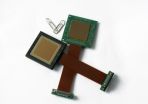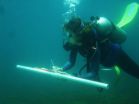(Press-News.org) They challenge the mountain ranges of the Alps, the Andes and the Himalayas in size yet surprisingly little is known about seamounts, the vast mountains hidden under the world's oceans. Now in a special issue of Marine Ecology scientists uncover the mystery of life on these submerged mountain ranges and reveal why these under studied ecosystems are under threat.
The bathymetry of our oceans is now resolved at a scale and detail unimaginable by early pioneers and recent estimates suggest that, globally, there may be up to 100,000 seamounts, yet despite best efforts less than 300 have been well studied. Recognising this scarcity of knowledge provided the motivation CenSeam, a seamount-focused field within the Census of Marine Life which commenced in 2005.
"The field of seamount ecology is rife with ecological paradigms, many of which have already become cemented in the scientific literature and in the minds of advocates for seamount protection," said Dr Ashley Rowden, one of the principal investigators of CenSeam. "Together, these paradigms have created a widely held view of seamounts as unique environments, hotspots of biodiversity with fragile ecosystems of exceptional ecological worth."
The special issue puts major paradigms in seamount ecology under the microscope to assess their status against the weight of existing evidence to date, and against the backdrop of the latest findings.
Researchers challenged the theory that seamounts act as hotspots of species richness, the weight of evidence now suggests that seamounts may have comparable levels of diversity and endemism to continental margins. However, it appears that their ecological communities are distinct in structure, and of higher biomass than neighbouring continental margins.
The geographical differences between seamount communities have suggested limited larval dispersal, local speciation, geographic isolation, or a combination of all these processes. New genetic research presented in the special issue addresses these themes, documenting complex patterns of connectivity among species populations that depend on spatial scale, physical barriers, and life history characteristics.
Much seamount research has been born out of the need to better manage these potentially vulnerable ecosystems. Globally, seamount ecosystems are under pressure from bottom-contact fishing and other human-related impacts. Researchers detail the footprint of trawling and a risk assessment confirms what has long been suspected: seamount communities are highly vulnerable to disturbance by bottom trawling and recovery from fishing impacts is a lengthy process, likely requiring decades at a minimum.
A predicted shallowing of the aragonite saturation horizon caused by ocean acidification is expected to place deepwater corals at risk, but researchers pose that the summits and upper flanks of seamounts may yet provide a spatial refuge from these impacts.
"It is hoped" says Thomas Schlacher, lead editor of the volume "that the papers in this special issue will challenge some of the previously held concepts about seamount ecosystems, and hopefully stimulate and help guide future research endeavours both on seamounts, and across the wider deep-sea realm."
INFORMATION:
Research papers from the Census of Marine life have been published in two special issues of the Marine Ecology, published by Wiley-Blackwell. The Census of Marine Life's latest title Life in the World's Oceans: Diversity, Distribution and Abundance, also published by Wiley-Blackwell, which includes the research of CenSeam, will be available in October.
Marine scientists unveil the mystery of life on undersea mountains
Special issue of Marine Ecology publishes seamount research to contribute to the Census of Marine Life
2010-09-20
ELSE PRESS RELEASES FROM THIS DATE:
Study gets measure of how best to prevent blood clots
2010-09-20
Treating hospital patients with thigh-length surgical stockings, rather than knee-high socks, can reduce life threatening blood clots, a new study suggests.
Researchers found that knee-high stockings, which are similar to flight socks, do little in stroke patients to prevent deep vein thrombosis (DVT), a life threatening form of blood clot that can travel up into the heart and lungs, .
The CLOTS (Clots in Legs Or sTockings after Stroke) study from the University of Edinburgh highlights that the clot rate in stroke patients was higher among those fitted with the shorter ...
The Amazon rainforest -- a cloud factory
2010-09-20
The forest in the Amazon Basin produces its own rain. During the wet season, aerosol particles, which serve to condensate clouds and precipitation here, mainly consist of organic material. These aerosols are released by the rainforest itself. This has been demonstrated by scientists from the Max Planck Institute for Chemistry in Mainz, who are now able to draw conclusions about the mechanisms of this ecosystem: the high content of organic material indicates that the Amazon Basin acts as a largely self-contained biogeochemical reactor during the rainy season. The results ...
Vigilant camera eye
2010-09-20
»Goal, goal, goal!« fans in the stadium are absolutely ecstatic, the uproar is enormous. So it's hardly surprising that the security personnel fail to spot a brawl going on between a few spectators. Separating jubilant fans from scuffling hooligans is virtually impossible in such a situation. Special surveillance cameras that immediately spot anything untoward and identify anything out of the ordinary could provide a solution. Researchers from the Fraunhofer Institute for Applied Information Technology FIT in Sankt Augustin have now developed such a device as part of the ...
Image sensors for extreme temperatures
2010-09-20
More and more car manufacturers are equipping their vehicles with image sensors – e.g. to register the presence of pedestrians or vehicles in the blind spot or to detect obstacles when parking. The sensors must be able to function in extremely high temperatures and in blazing sunlight. If they are installed behind the rear view mirror or on the instrument panel, for example, they can get very hot. The Fraunhofer Institute for Microelectronic Circuits and Systems IMS in Duisburg has developed a CMOS (complementary metal oxide semiconductor) image sensor for an industrial ...
Taking the pulse of coral reefs
2010-09-20
Healthy reefs with more corals and fish generate predictably greater levels of noise, according to researchers working in Panama. This has important implications for understanding the behaviour of young fish, and provides an exciting new approach for monitoring environmental health by listening to reefs.
Contrary to Jacques Cousteau's 'Silent World', coral reefs are surprisingly noisy places, with fish and invertebrates producing clicks and grunts which combine to produce cacophonies of noise. Each reef is subtly different depending on the size and composition of the ...
Earth's highest coastal mountain on the move
2010-09-20
The rocks of Colombia's Sierra Nevada de Santa Marta—the highest coastal mountain on Earth—tell a fascinating tale: The mountain collides and then separates from former super-continents. Volcanoes are born and die. The mountain travels from Peru to northern Colombia and finally rotates in a clockwise direction to open up an entirely new geological basin. Smithsonian scientists were part of a four-year project to study Santa Marta's geological evolution. Their findings are published in the October 2010 special issue of the Journal of South American Earth Sciences.
The study ...
Returning troops face both physical and mental challenges
2010-09-20
Is the US health system comprehensively meeting the needs of returning veterans? With the recent attention to mental illness in returning soldiers, and post-traumatic stress disorder (PTSD) in particular, little research has focused on the medical care needs of those returning from Operation Enduring Freedom/Operation Iraqi Freedom, according to Dr. Susan Frayne, from the VA Palo Alto Health Care System and Stanford University, and colleagues.
Their research highlights that veterans suffering from PTSD also suffer more medical illnesses than do those with no mental health ...
Cholesterol drug may have role in treating prostate cancer
2010-09-20
TORONTO, Ont., Sept. 20, 2010 – A drug commonly prescribed for people with high cholesterol may also be effective in treating prostate cancer, according to new research by Dr. Xiao-Yan Wen at St. Michael's Hospital.
Rosuvastatin—a statin drug sold as Crestor—suppressed the growth of transplanted human prostate cancer cells in mice.
"Our data provided solid pre-clinical evidence and a strong rationale for clinical trials of statins in the treatment of prostate cancer," said Wen, whose research appears in the September issue of European Urology, the journal of the European ...
Study: Privacy key obstacle to adopting electronic health records
2010-09-20
The United States could achieve significant health care savings if it achieved widespread adoption of electronic health records (EHRs), but insufficient privacy protections are hindering public acceptance of the EHR concept, according to a new paper from researchers from North Carolina State University. The paper outlines steps that could be taken to boost privacy and promote the use of EHRs.
"Electronic health records could reduce costs in the U.S. by an estimated $80 to 100 billion each year," says Dr. David Baumer, head of the business management department at NC State ...
Kids and diabetes risk: Do chromosomes hold new clues?
2010-09-20
Children who have a high risk of developing type 2 diabetes might be identified earlier by way of tell-tale genetic indicators known as biomarkers. Some of those new biomarkers might be pinpointed in research led by Nancy F. Butte and funded by the U.S. Department of Agriculture (USDA) and the U.S. Department of Health and Human Service's National Institutes of Health.
Butte is with the USDA Agricultural Research Service (ARS) Children's Nutrition Research Center at Baylor College of Medicine in Houston, Texas, where she is a professor of pediatrics. ARS is USDA's principal ...
LAST 30 PRESS RELEASES:
Injectable breast ‘implant’ offers alternative to traditional surgeries
Neuroscientists devise formulas to measure multilingualism
New prostate cancer trial seeks to reduce toxicity without sacrificing efficacy
Geometry shapes life
A CRISPR screen reveals many previously unrecognized genes required for brain development and a new neurodevelopmental disorder
Hot flush treatment has anti-breast cancer activity, study finds
Securing AI systems against growing cybersecurity threats
Longest observation of an active solar region
Why nail-biting, procrastination and other self-sabotaging behaviors are rooted in survival instincts
Regional variations in mechanical properties of porcine leptomeninges
Artificial empathy in therapy and healthcare: advancements in interpersonal interaction technologies
Why some brains switch gears more efficiently than others
UVA’s Jundong Li wins ICDM’S 2025 Tao Li Award for data mining, machine learning
UVA’s low-power, high-performance computer power player Mircea Stan earns National Academy of Inventors fellowship
Not playing by the rules: USU researcher explores filamentous algae dynamics in rivers
Do our body clocks influence our risk of dementia?
Anthropologists offer new evidence of bipedalism in long-debated fossil discovery
Safer receipt paper from wood
Dosage-sensitive genes suggest no whole-genome duplications in ancestral angiosperm
First ancient human herpesvirus genomes document their deep history with humans
Why Some Bacteria Survive Antibiotics and How to Stop Them - New study reveals that bacteria can survive antibiotic treatment through two fundamentally different “shutdown modes”
UCLA study links scar healing to dangerous placenta condition
CHANGE-seq-BE finds off-target changes in the genome from base editors
The Journal of Nuclear Medicine Ahead-of-Print Tip Sheet: January 2, 2026
Delayed or absent first dose of measles, mumps, and rubella vaccination
Trends in US preterm birth rates by household income and race and ethnicity
Study identifies potential biomarker linked to progression and brain inflammation in multiple sclerosis
Many mothers in Norway do not show up for postnatal check-ups
Researchers want to find out why quick clay is so unstable
Superradiant spins show teamwork at the quantum scale
[Press-News.org] Marine scientists unveil the mystery of life on undersea mountainsSpecial issue of Marine Ecology publishes seamount research to contribute to the Census of Marine Life





